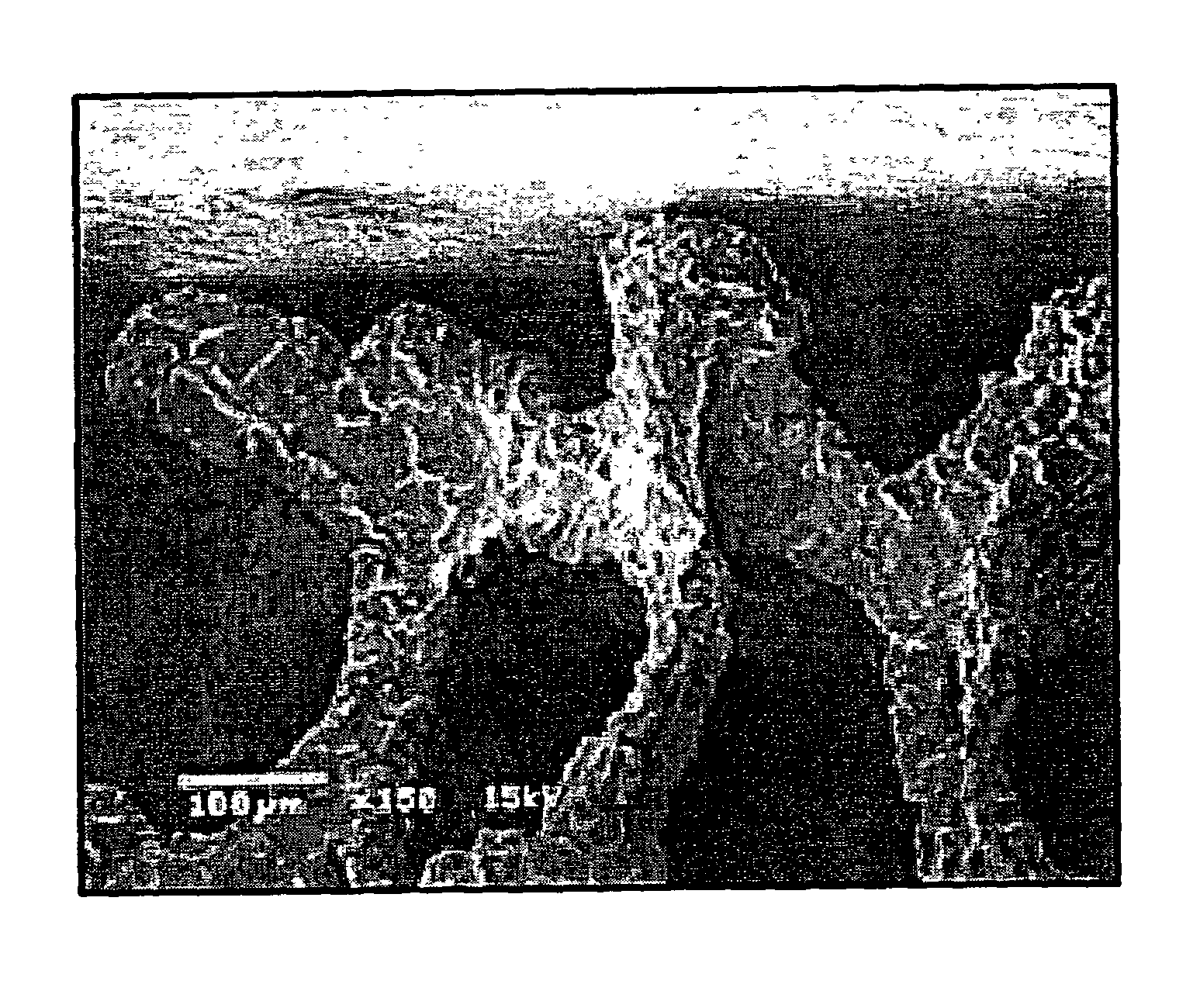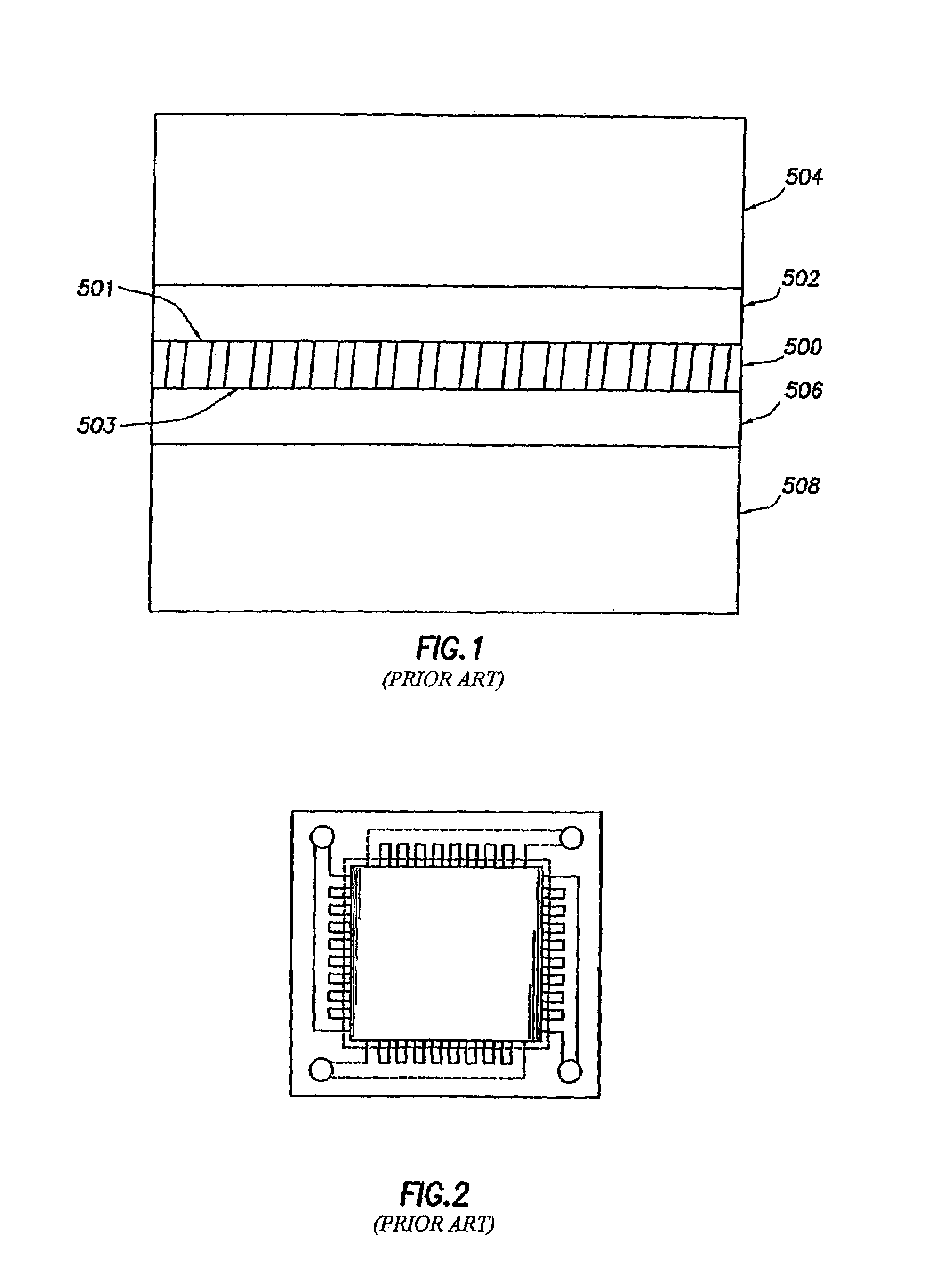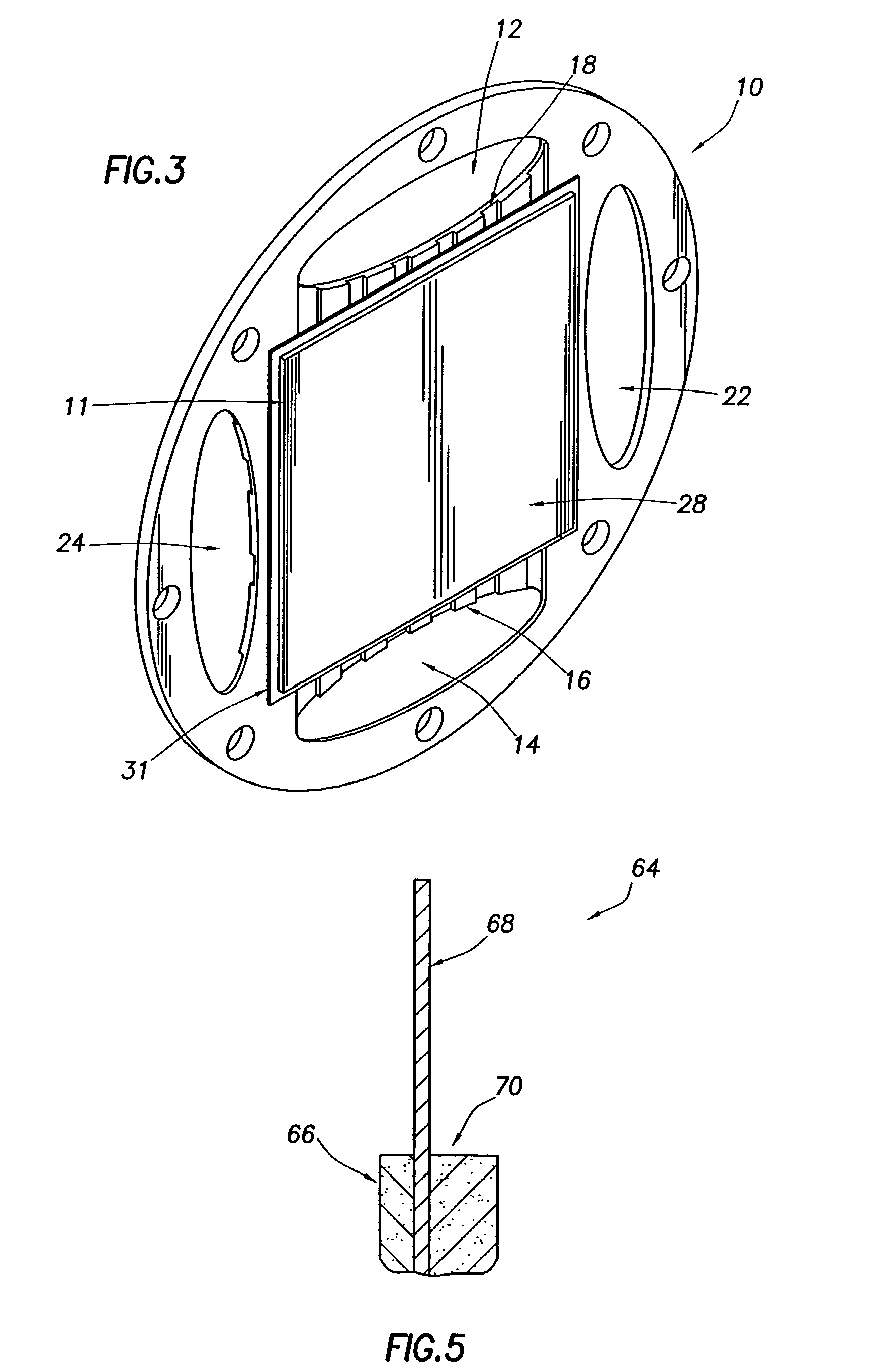Flow fields for fuel cells
a fuel cell and flow field technology, applied in the field of flow fields of fuel cells, can solve the problems of insufficient need, inability to successfully adapt fuel cell technology for use in electric utility systems, and inability to meet the needs of users, so as to reduce the maintenance operations of fuel cells, improve the life, and optimize the effect of mass transpor
- Summary
- Abstract
- Description
- Claims
- Application Information
AI Technical Summary
Benefits of technology
Problems solved by technology
Method used
Image
Examples
Embodiment Construction
[0037]FIG. 3 depicts one embodiment of an individual fuel cell assembly of the present invention. As shown in FIG. 3, fuel cell 11 is housed within distribution frame 10. Distribution frame 10 not only houses fuel cell 11, but also facilitates transportation of the fuel and the oxidant to the fuel cell necessary for the electrochemical exchange in the fuel cell. This individual fuel cell assembly can be combined with other fuel cell assemblies to form a fuel cell node, and ultimately a stack assembly, to provide higher voltages and current for power generation. Of note in FIG. 3 are fuel inlet 22, fuel inlet 24, air inlet 12 and air and water outlet 14. The fuel inlets 22 and 24, air inlet 12, and air and water outlet 14 are apertures in the distribution frame extending completely through the distribution frame, and run perpendicular, or at 90° angles, from one another in the distribution frame to facilitate the efficient flow of the fuel and oxidant to and through the anode gas and...
PUM
| Property | Measurement | Unit |
|---|---|---|
| mass transport | aaaaa | aaaaa |
| resistance | aaaaa | aaaaa |
| electrical energy | aaaaa | aaaaa |
Abstract
Description
Claims
Application Information
 Login to View More
Login to View More - R&D
- Intellectual Property
- Life Sciences
- Materials
- Tech Scout
- Unparalleled Data Quality
- Higher Quality Content
- 60% Fewer Hallucinations
Browse by: Latest US Patents, China's latest patents, Technical Efficacy Thesaurus, Application Domain, Technology Topic, Popular Technical Reports.
© 2025 PatSnap. All rights reserved.Legal|Privacy policy|Modern Slavery Act Transparency Statement|Sitemap|About US| Contact US: help@patsnap.com



